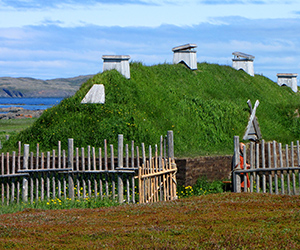CANADA HISTORY
Wind from the West

The election of John Diefenbaker as Prime Minister of Canada in 1957 and his subsequent landslide victory in 1958 marked a significant turning point in Canadian political history. The period preceding and following his rise to power is important not only for the impact it had on the Progressive Conservative Party, but also for the long-term effects it had on Canadian politics and national identity. Diefenbaker’s leadership and vision reshaped Canadian politics, emphasized a more inclusive sense of Canadian identity, and brought an end to the long dominance of the Liberal Party.
The Lead-Up: George Drew and the Conservative Reawakening
Before Diefenbaker’s rise, the Progressive Conservative Party had spent over two decades in the political wilderness. George Drew, the party’s leader, was widely seen as an individual who could challenge the Liberal Party’s control, especially under Louis St. Laurent, the sitting Prime Minister. However, in 1955, Drew fell ill with meningitis, which severely hampered his ability to continue as an effective political leader. Despite being treated with new antibiotics, Drew’s health never fully recovered, and the physical toll of the illness, combined with the grueling demands of the Pipeline Debate—which became known as the "great Conservative filibuster"—drained him further.
Facing mounting pressures, Drew decided to resign as leader in 1956, paving the way for a leadership convention in the Progressive Conservative Party. It was an optimistic time for the party, as it sought to end the long reign of the Liberal Party, which had been in power almost uninterrupted since 1935.
The Diefenbaker Victory: A New Kind of Leadership
At the 1956 Conservative leadership convention, John Diefenbaker emerged as the front-runner. Although he was not the favored candidate of party insiders, his populist style and emotional appeal to the electorate won him broad support. On the first ballot, he secured a decisive victory with 774 votes, leaving his closest rivals, Don Fleming and Davie Fulton, far behind. Diefenbaker’s victory marked a shift in the party, as he was seen as an outsider with a flair for impassioned rhetoric rather than traditional backroom politics.
Diefenbaker’s rise came at a time when Canadians were ready for a change from the staid, bureaucratic approach of the Liberals under Louis St. Laurent. St. Laurent, while respected for his statesmanship, was seen as increasingly out of touch with the evolving needs of the country. In contrast, Diefenbaker’s charisma and oratory skills electrified crowds. His use of radio as a tool for reaching voters was particularly effective, and as the 1957 election campaign progressed, he began to close the gap with the Liberals.
On election night in June 1957, Diefenbaker achieved what many had thought impossible: the Progressive Conservatives won 112 seats, edging out the Liberals, who captured 105 seats. Although it was not a majority, Diefenbaker’s victory was enough to force St. Laurent to step down, and the Conservatives formed the government for the first time in 22 years. Diefenbaker’s win was seen as a breakthrough, not only for the party but for Canadian democracy, as it demonstrated that the long-standing Liberal dominance could be challenged.
The 1958 Landslide: Diefenbaker’s Vision for Canada
After the 1957 election, Lester Pearson, a Nobel Prize-winning diplomat, was chosen as the new leader of the Liberal Party. Pearson’s reputation on the international stage was unblemished, but he was inexperienced in domestic politics and lacked the fiery charisma of Diefenbaker. Soon after becoming leader, Pearson made a significant miscalculation: he called on Diefenbaker to step aside and allow the Liberals to take control of the government. The challenge was ill-timed and poorly received. Rather than stepping down, Diefenbaker seized the opportunity and called for a new election in 1958, less than a year after his first win.
The 1958 election was a watershed moment in Canadian political history. Diefenbaker campaigned vigorously, tapping into the growing desire for a national vision that included all regions and peoples of Canada. His platform emphasized inclusion, prosperity for farmers, and a greater focus on the development of Canada’s northern resources. He also promised to create a government that would represent "the people" rather than the interests of big business or the bureaucracy.
Diefenbaker’s message resonated powerfully with Canadians, and on election night, the Conservatives achieved one of the most decisive victories in Canadian history. They won 208 out of 265 seats, leaving the Liberals with only 49 seats. The Cooperative Commonwealth Federation (CCF) was reduced to 8 seats, and the other parties were shut out entirely. The Progressive Conservatives had garnered 54% of the popular vote, giving them a clear mandate to govern. Even more remarkably, they won a majority of seats in Quebec, something the party had not managed since the days of John A. Macdonald.
A New National Vision
Diefenbaker’s 1958 victory was significant not just for its size, but for what it represented in Canadian politics. Diefenbaker had successfully painted a vision of Canada’s future that appealed to people from coast to coast. His focus on the North, which he referred to as the “last frontier,” tapped into a sense of national pride and potential. He believed that Canada’s natural resources, particularly in the North, would be key to the country’s future prosperity and that their development would unify the nation.
Diefenbaker also sought to expand opportunities for farmers, especially those in the Prairies, who had felt neglected by previous governments. His message of inclusion resonated with ethnic and religious minorities, and he emphasized the importance of giving all Canadians a stake in the process of nation-building. For the first time in many years, Canadians felt that their government was working for them, rather than for a distant elite.
Challenges and Opportunities
With such a massive mandate, Diefenbaker had an unprecedented opportunity to reshape Canada. However, the size of his victory also created enormous expectations. The electorate expected him to deliver on his promises of prosperity and inclusion, and his government would need to navigate the complexities of Cold War geopolitics and economic challenges.
One of Diefenbaker’s first major initiatives was the Canadian Bill of Rights, passed in 1960, which was an important step in enshrining civil rights in Canadian law. Although it fell short of being a constitutional amendment, the Bill of Rights was a landmark achievement and demonstrated Diefenbaker’s commitment to creating a more just and inclusive society.
However, Diefenbaker’s tenure was not without its difficulties. His government faced internal divisions, particularly over defense policies, such as the controversial decision to cancel the Avro Arrow program in favor of American missile defense systems. His handling of foreign relations, particularly his hesitancy during the Cuban Missile Crisis, strained Canada’s relationship with the United States and damaged his standing at home.
Legacy
John Diefenbaker’s rise to power in 1957 and his landslide victory in 1958 marked a turning point in Canadian political history. His vision for Canada, focused on inclusion, national unity, and the development of the North, resonated deeply with Canadians across the country. His success shattered the Liberal Party’s dominance and revitalized the Progressive Conservative Party, giving it new energy and purpose.
Diefenbaker’s political style—emotional, populist, and deeply connected to the aspirations of everyday Canadians—changed the nature of political discourse in Canada. He brought rural and Western Canada into the heart of Canadian politics, emphasizing the need for all regions to have a voice in the nation’s future. Despite the challenges he faced later in his tenure, Diefenbaker’s victories in the late 1950s set the stage for a new era of Canadian political engagement and national identity.
Ultimately, Diefenbaker’s legacy is one of inclusiveness and vision, as he sought to build a Canada that represented all its people, not just the elites. His achievements and challenges continue to shape Canadian politics and reflect the evolving identity of the nation during a critical period in its history.
Cite Article : www.canadahistory.com/sections/documents




